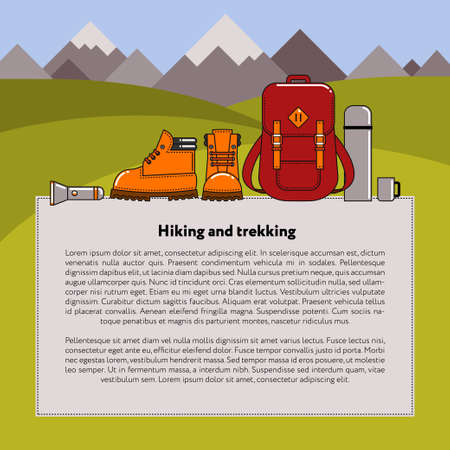Understanding Rights of Way in Britain
To tread lightly across the British countryside, one must first grasp the concept of rights of way—a set of unique legal provisions deeply woven into the fabric of UK land access. Public footpaths, bridleways, and other rights of way are not merely walking tracks; they represent a centuries-old tradition that balances private landownership with public liberty. These pathways, marked by distinct signage and sometimes ancient hedgerows or stone walls, often have roots in medieval times when villagers needed routes to markets, churches, and neighbouring hamlets. Over generations, these routes became legally protected corridors for travel on foot, horseback, or even bicycle, depending on their designation. The legal framework underpinning these rights is robust: legislation such as the Countryside and Rights of Way Act 2000 (CRoW) and the Highways Act 1980 ensure that rights of way are recorded, maintained, and accessible. In practice, this means that walkers and riders can traverse farmland, forests, moorlands, and even skirt private estates—provided they remain on the designated path and respect both the law and the landscape. Understanding this history and legal structure is essential for anyone wishing to explore Britains greenways with confidence and care.
2. The Countryside Code: Key Principles
When venturing along Britain’s public footpaths and rights of way, understanding and following the Countryside Code is essential for both your safety and the preservation of these treasured spaces. The Code sets out clear guidelines designed to help everyone enjoy the countryside responsibly while minimising disturbance to the environment, wildlife, and local communities.
Staying on the Path
One of the cornerstone principles is to always keep to marked footpaths and bridleways. Straying from designated paths can damage crops, disturb habitats, and even lead to erosion. Especially in sensitive areas such as farmland or nature reserves, sticking to the route helps protect both the land and its inhabitants.
Respecting Gates and Property
Farm gates are a common sight along many routes. The golden rule here is simple: leave gates as you find them. If a gate is open, leave it open; if closed, make sure it remains shut after you pass through. This prevents livestock from escaping or wandering into unsafe areas.
Interacting with Wildlife and Livestock
The British countryside teems with life, from grazing sheep to rare birds. Give animals plenty of space, avoid making loud noises, and never attempt to feed wildlife or farm animals. When walking with dogs, keep them under close control—ideally on a short lead—especially near livestock during lambing or calving seasons.
Essential Guidelines at a Glance
| Principle | Description |
|---|---|
| Keep to Paths | Protects crops and habitats by staying on marked routes |
| Close Gates | Prevents livestock escapes; leave gates as you find them |
| Control Dogs | Avoids distress or harm to wildlife and farm animals |
| Take Litter Home | Keeps paths clean for others; protects wildlife from harm |
| Respect Privacy | Avoids trespassing and respects residents property |
A Shared Responsibility
Navigating Britain’s footpaths is about more than just following signs—it’s a shared commitment to protect these spaces for future generations. By adhering to the Countryside Code, walkers ensure that these ancient rights of way remain open, safe, and welcoming for all.

3. Navigating the Landscape: Maps, Signage, and Tools
Finding your way along Britain’s intricate network of public footpaths can be as rewarding as it is challenging. While the countryside invites exploration, it’s essential to equip yourself with the right resources and local knowledge to ensure you stay on track and respect the land you traverse. The classic Ordnance Survey (OS) maps are a mainstay for British walkers; these detailed paper or digital maps clearly mark rights of way, bridleways, and permissive paths. For many, carrying an OS Explorer map in your rucksack is considered best practice, not only for navigation but also for gaining a deeper appreciation of the landscape’s features.
Reading the Signs: Local Guidance
On the ground, signage plays a vital role in guiding walkers. Look out for distinctive waymarkers—often small discs or arrows attached to posts, stiles, or gates—indicating whether you’re on a public footpath (usually yellow), bridleway (blue), or byway (red). Local councils and landowners maintain these signs, but their condition can vary, especially in remote areas. When in doubt, check nearby fingerposts at road junctions or crossroads; these typically display the path’s destination and distance.
Digital Tools: Apps Favoured by British Walkers
The rise of digital technology has made navigation more accessible than ever. Popular apps such as OS Maps and ViewRanger allow users to download routes, access up-to-date mapping, and even share favourite walks with friends. These platforms often include GPS tracking and offline capabilities—handy in areas with patchy mobile signal. Many British ramblers also use apps like Komoot or AllTrails for planning longer adventures or discovering circular routes recommended by fellow walkers.
Practical Tips for Staying on Track
Always double-check your intended route before setting off, noting key landmarks or features that will help confirm your location en route. Respect temporary diversions or closures indicated by official notices. If you stray from the path by accident, retrace your steps rather than crossing fields or fences. In all cases, remember that careful preparation and attention to local signage go hand-in-hand with enjoying Britain’s cherished right to roam responsibly.
4. Respecting Landowners and Rural Communities
One of the most crucial aspects of enjoying Britain’s public footpaths is showing respect towards landowners and the rural communities who maintain these beautiful areas. While rights of way grant walkers legal access, much of the land crossed remains privately owned or actively farmed. Exercising common courtesy and understanding local customs can make all the difference in maintaining harmonious relationships.
The Importance of Courtesy
When traversing private or working land, a courteous attitude helps foster goodwill. Always greet farmers or residents if you meet them along the way; a simple “Good morning” or “Afternoon” goes a long way in rural Britain. If you’re walking with a group, keep noise to a minimum—remember, livestock may be nearby and machinery might be in operation.
Minimising Disruption
To minimise your impact on both people and the landscape, stick strictly to marked footpaths and bridleways. Avoid wandering off-trail, as this can damage crops, disturb wildlife, and infringe on privacy. The Countryside Code highlights best practices for walkers:
| Countryside Code Principle | Practical Application |
|---|---|
| Leave gates as you find them | If a gate is closed, close it after passing through; if open, leave it open |
| Keep dogs under control | Use leads near livestock and always clean up after your pet |
| Take litter home | Avoid leaving any trace of your visit behind |
| Respect property boundaries | Do not climb over walls or fences; use stiles where provided |
Understanding Local Customs and Permissions
Different regions may have their own traditions regarding access, particularly during sensitive times such as lambing season or harvest. Look out for temporary signs requesting diversions or caution—these are typically put in place for safety or to protect livelihoods. If uncertain about access, do not hesitate to ask a local resident or check with the relevant county council’s rights of way team.
The Value of Permission
Some routes pass over permissive paths rather than statutory rights of way. These rely entirely on the goodwill of landowners, so treat them with extra care. If you wish to picnic, sketch, or pause for extended periods, seek permission if possible; even a quick word with the farmer shows consideration.
Summary Table: Key Courtesies on Public Footpaths
| Action | Reason |
|---|---|
| Acknowledge landowners if encountered | Builds positive relations and trust |
| Follow all posted signs and diversions | Ensures safety and respects ongoing work |
| Avoid obstructing gateways or tracks with vehicles or belongings | Keeps access clear for agricultural operations |
| Be discreet when passing homes or gardens adjacent to paths | Preserves residents’ privacy and comfort |
Treading lightly is more than just a metaphor; it’s an everyday practice that keeps Britain’s network of public footpaths open, enjoyable, and sustainable for everyone.
5. Cultural Traditions and Modern Footpath Etiquette
Britain’s public footpaths are more than just practical routes through the countryside—they are woven into the fabric of national identity, supporting a vibrant walking culture that has evolved over centuries. From the rolling hills of the Lake District to the rugged coastlines of Cornwall, these paths have inspired poets, artists, and everyday ramblers alike, fostering a unique sense of connection with the landscape.
Walking Festivals: Celebrating Access and Community
Throughout the year, communities across the UK host walking festivals that attract locals and visitors in equal measure. Events such as the Keswick Mountain Festival or the South Downs Walking Festival offer guided walks, educational talks, and opportunities to explore both well-trodden and lesser-known routes. These gatherings underscore a communal appreciation for access rights and responsible enjoyment of rural spaces, often highlighting local history and natural heritage.
The Rambling Tradition: Clubs and Camaraderie
Rambling clubs have long been a staple of British outdoor life. Groups like The Ramblers—founded in 1935—have championed walkers’ rights while fostering social bonds through regular excursions. Membership is open to all ages and backgrounds, reflecting the inclusive spirit that characterises Britain’s approach to public access. Whether navigating ancient byways or urban green corridors, ramblers value collective responsibility: leaving gates as they are found, picking up litter, and respecting livestock and crops along the way.
Evolving Attitudes: Sharing Rural Spaces Today
As rural landscapes face new pressures—from increased tourism to changing agricultural practices—the etiquette surrounding footpaths continues to evolve. Walkers are encouraged to follow the Countryside Code: keep dogs under control, stick to marked paths, and be mindful of private property. Increasingly, there is recognition that sharing these spaces means balancing recreation with conservation and local livelihoods. This shift is evident in collaborative projects where farmers, landowners, and walking groups work together to maintain routes for future generations.
A Living Tradition
The culture of walking in Britain remains dynamic—rooted in tradition yet responsive to contemporary challenges. By participating in festivals, joining clubs, or simply taking a stroll with respect for others, each walker contributes to a living legacy that values both freedom of movement and stewardship of the countryside.
6. Legal Considerations and What to Do If Challenged
Understanding Your Rights and Responsibilities
Britain’s public footpaths and rights of way are protected by law, but it’s vital to know both your entitlements and your obligations as a walker. Public footpaths grant the public a legal right of passage, yet they often cross private land. You are permitted to walk along these designated paths, but venturing off them or causing any damage is not allowed. Always respect crops, livestock, and property boundaries, adhering to the Countryside Code at all times.
Common Disputes on Footpaths
While most landowners recognise public rights of way, disputes can occasionally arise. The most frequent issues include blocked paths (by fences, gates, or vegetation), misleading signage discouraging access, or even direct confrontation from landowners or their representatives. Sometimes, walkers are wrongly told that a path is private or asked to leave without cause. In rare cases, misunderstandings escalate due to lack of clarity about the route or its status.
If You Are Confronted or Challenged
Stay Calm and Courteous
If someone challenges your right to use a path, remain calm and polite. Explain you believe you are on a public right of way and show any relevant map or council documentation if available. Avoid escalating the situation—most disputes can be resolved amicably with clear communication.
Know the Law
Under UK law, public rights of way must remain open and accessible. It is an offence for landowners to obstruct or deliberately mislead walkers about legal routes. If you suspect a path is being blocked unlawfully, note details such as location and nature of the obstruction. You have no obligation to provide personal information unless police are involved and there is reasonable suspicion of an offence.
Recording and Reporting Issues
If dialogue fails or you encounter persistent problems, record the details discreetly—take photographs if safe and appropriate, mark the spot on your map or smartphone, and document your route. Report obstructions or intimidating behaviour to your local authority’s Public Rights of Way Officer or the Ramblers Association; they can investigate and take further action if necessary.
Summary: Walk With Confidence
Your right to walk Britain’s public footpaths is enshrined in law, but mutual respect is key. By knowing your responsibilities and calmly asserting your rights when challenged, you help protect access for everyone. Tread lightly, stay informed, and play your part in preserving this uniquely British tradition.


